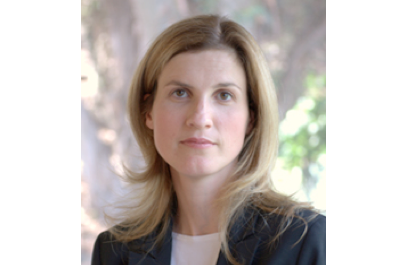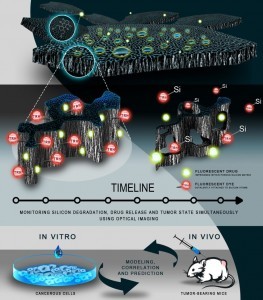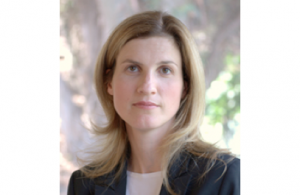
Ester Segal
Associate Professor at Technion - Israel Institute of Technology
Prof. Ester Segal
Email:esegal@tx.technion.ac.ilEster Segal earned her B.Sc. (cum laude) in chemical engineering in 1997 from the Technion – Israel Institute of Technology. Her M.Sc. and Ph.D. in polymer science under Professor Moshe Narkis focused on the development of electrically conductive polymer systems and their application as sensors for volatile organic compounds. After completing her PhD in 2004, she was awarded with the Rothschild Postdoctoral Fellowship and she joined the group of Prof. Mike Sailor at the Department of Chemistry and Biochemistry at the University of California, San Diego, working on porous Si nanomaterials. In 2007 she returned to Israel and joined the Department of Biotechnology and Food Engineering at the Technion.
At the Technion, she is leading a research group focusing at the broad interface between materials science and biotechnology. Research projects in Prof. Segal’s laboratory implement a multidisciplinary approach coupling materials science and engineering, chemistry and biology for addressing problems in biotechnology, food engineering, and medicine. Current projects include the development of novel nanomaterials for sensing, biosensing, bioassays, and advanced new drug delivery schemes.
At the Technion, she is leading a research group focusing at the broad interface between materials science and biotechnology. Research projects in Prof. Segal’s laboratory implement a multidisciplinary approach coupling materials science and engineering, chemistry and biology for addressing problems in biotechnology, food engineering, and medicine. Current projects include the development of novel nanomaterials for sensing, biosensing, bioassays, and advanced new drug delivery schemes.
LINKS

Experience
Associate Professor
Assistant Professor
Postdoc
Publications
Engineering Nanostructured Porous SiO2 Surfaces for Bacteria Detection via “Direct-Cell-Capture"(Link)
Analytical Chemistry
2011Compatibility of Cancer Cells with Nanostructured Porous SiO2 Substrates(Link)
physica status solidi (c)
2011Preparation and characterization of a multifunctional poly(N-isopropylacrylamide-co-acrylic acid)/porous SiO2 hybrid(Link)
Advanced Functional Materials
2010Construction and Characterization of Porous SiO2/Hydrogel Hybrids as Optical Biosensors for Rapid Detection of Bacteria(Link)
Advanced Functional Materials
2010Advancing Nanostructured Porous Si-Based Optical Transducers for Label Free Bacteria Detection(Link)
Advances in Experimental Medicine and Biology
2012Label-free optical biosensors based on aptamer-functionalized porous silicon scaffolds(Link)
ACS - Analytical Chemistry
December 30, 2014Education
Has that food in the fridge gone bad?

ESTER SEGAL OF TECHNION EXPLAINS HER TEAM’S CREATION OF A SENSOR TO DETECT BACTERIA IN FOOD AND WATER.
PHOTOS BY SUZANNE POLLAK
PHOTOS BY SUZANNE POLLAK
A team at Technion- Israel Institute of Technology has a developed an inexpensive and quick way to identify bacteria in food and water, with the invention currently in testing stages.
Ester Segal, associate professor at Technion, spoke Jan. 29 at Ohr Kodesh Congregation in Chevy Chase about her team’s design.
As any parent who has waited to learn results of a throat culture knows, it can take two days in a lab for bacteria to grow and for health care providers to obtain test results, she said.
But, if the results can be learned instantly, medicine can administered sooner.
Similarly, bacteria-infected food can be removed before it reaches stores.
“The challenge is to ID [the bacteria], ideally in real time and outside the lab [at the site of the contamination],” Segal said during her talk, which was sponsored by the Israel Solidarity Committee of Ohr Kodesh and the Washington Chapter of American Technion.
The biosensor has two elements.
One is a receptor, often an antibiotic, which recognizes bacteria. The other is a transducer, which enables a person using the biosensor to recognize the presence of bacteria. The person reading the results is alerted to bacteria by a light that changes color.
The machine uses a silicon wafer similar to the ones in cellular phones. However, this piece of silicon is perforated so that it has tiny holes throughout, Segal explained.
When water or food is tested, the bacteria present either fall down these holes or stay atop the wafer. Either way, the change disturbs the way light is reflected, sending off a different color.
Segal anticipates that her biosensor one day will be inexpensive enough for people to test the yogurt in their refrigerators, instead of relying on a printed expiration date.
Those dates are “intellectual guesses” and “assumptions,” she said.
She asked the 25 people gathered in the synagogue’s library how often they threw something away even though it had yet to expire or noticed that one piece of food had mold on it while another did not, although they both had the same expiration date.
The biosensor is licensed by Technion and is undergoing testing in a European lab.
A pilot program will be conducted in the Netherlands during this spring’s growing season. This is important, Segal said, because the Netherlands does not allow chlorine in its water, which permits bacteria to grow. Without chlorine, there is a “huge potential” for contamination, Segal said.
If everything is successful, Segal expects the biosensor to be approved for use. She is optimistic the new nanotechnology will greatly reduce the roughly 3,000 deaths and 45 million non-fatal illnesses annually in the United States due to bacteria-contaminated food and water.
Meanwhile, her team is trying to create better food packaging material using essential oils that will lengthen the shelf life of food and prevent bacteria from growing while food is being transported. Currently, plastics are used in a great deal of packaging materials, although fungi and mold grow in that environment, Segal said.
“Fungi and molds are very difficult to kill. You must know that from your shower curtains,” she said.
He team also is looking into detecting bacteria more quickly in illnesses, including urinary tract infections, and being able to determine more readily which antibiotics work on which bacteria.
Segal’s use of nanotechnology to improve food safety has been in the works since 2008.
That includes time spent raising funds and seeking grants, she said, as raising money for her work is part of her job. She said it took her about one year to obtain money from the Israel Science Foundation before she was able to begin her scientific work. As the biosensor progressed, Segal often found herself involved in applying for competitive grants to keep her work on track.

Technion: Prof Ester Segal, multifunctional nanoparticles, winner of Yanai Prize
“Teaching is very demanding, and it’s not always easy finding the time to devote to it with all the other tasks before me, but for me it is a true calling,” explains Prof. Ester Segal from the Faculty of Biotechnology & Food Engineering. Prof. Segal was recently awarded the Yanai Prize for Excellence along with nine other faculty members. The prize, funded by Technion graduate Mr. Moshe Yanai in the amount of 100 thousand Shekels, is awarded to Technion faculty.

In her acceptance speech at the prize ceremony, Prof. Segal explained that, “The role of teacher for me is not only about the transfer of knowledge, imparting skills and assisting students in achieving the highest possible grades. It is our task to instil curiosity and a desire for knowledge, to nurture critical thinking, creativity and independence, and to prepare students for the real world that will be waiting for upon completing their studies. I believe that as educators, we should approach teaching with the same enthusiasm and responsibility we place on research on our research. Such attitude towards teaching makes it an interesting and challenging activity and motivates us to be innovative and effective in the classroom. We must keep in mind that in teaching, there is no ‘one size fits all’ – classes are always heterogeneous, and each student has a different learning style. I also believe that building communication and trust is critical for establishing an efficient and productive learning environment. I show the students empathy and care; this also means going an extra mile for them.”
Prof. Ester Segal completed all three of her degrees at the Technion’s Faculty of Chemical Engineering. In 2007, upon completion of her postdoctorate at the Faculty of Chemistry and Biochemistry at the University of California, San Diego (UCSD), she joined the Faculty of Biotechnology and Food Engineering at the Technion. She currently heads the Multifunctional Nanomaterials Laboratory, located at the Faculty, and in the past year she received the Henry Taub Prize for Excellence in Research.

The image illustrates porous silicon (PSi) particles used as a platform for the delivery of anticancer drugs (highlighted in green on the diagram) and its release at the targeted breast cancer tumors. The degradation of the PSi at the tumor microenvironment was investigated using novel imaging methods. The researchers tracked the decomposition of the material on the diseased tissue and uncovered its degradation mechanism, which triggers the release of the drugs trapped within the porous medium.
Prof. Segal heads a multidisciplinary research team investigating the interface between materials science and biotechnology. The main research at the laboratory focuses on the synthesis and characterization of nanomaterials and their application to the development of biological sensors and drug delivery systems.
In an article she recently published in the prestigious journal Nature Communications, she reported that silicon carriers for the local delivery of anticancer drugs degrade differently when they reach the diseased environment, which can affect clinical outcomes. The study, conducted jointly with Prof. Natalie Artzi from the Massachusetts Institute of Technology (MIT) and the Harvard Medical School, sheds light on this degradation process, opening the way for improved tumor treatments.
“In this study we have shown for the first time that biomaterials in general, and nanostructured porous silicon in particular, behave differently when they are injected (or implanted) at the tumor microenvironment. Over the last few years, we successfully engineered silicon to be used as a carrier of anticancer drugs that releases its contents in a controlled manner, and now we are focusing on the degradation mechanism of the silicon at the diseased tissue,” explains Prof. Segal.
Nanostructured Porous Silicon is the common name for a family of silicon-based materials containing nano-scale holes. This material is today seen as a promising drug delivery vehicle, mainly due to its unique characteristics: a large surface area (geared for drug unloading), biocompatbility, and bio-degradability in a safe and non-toxic manner. In recent years, Prof. Segal and her doctoral student Adi Tzur-Balter developed ‘containers’ (carriers) for the delivery of anticancer drugs. Through careful design of the silicon containers, in terms of their pore diameter and surface chemistry, the group achieved optimal features for effective drug delivery.
One of the important findings of the study, which investigates the behavior of the silicon ‘containers in breast cancer tumors, is associated with the accelerated degradation of the silicon material in the diseased area. The research showed that reactive oxygen species upregulated in the cancerous environment (in vivo), induce oxidation of the silicon, causing a rapid degradation of the ‘containers’ as compared with (in vitro) lab experiments. As a result, this article sheds light on the process of nanostructured silicon degradation at the tumor microenvironment, and allows for early and smart design intervention of the silicon structure to facilitate controlled release of the drug at the targeted site.

Prof. Ester Segal receives the Henry Taub Award for Academic Excellence
27 March, 2014
Ester will receive the prestigious prize during the upcoming annual meeting of Technion’s Board of Governors.


Webinars with Ester Segal
On this page, conducts webinars wonderful famous Esther Segal .Arhiv webinars updated as of meropriyatiy.Priyatnogo view.

THE TECHNION INTEGRATED CANCER CENTER
The Technion Integrated Cancer Center (TICC) combines scientists from the university’s strong basic science and engineering departments with its researchers from its Faculty of Medicine and clinicians from the Rambam Health Care Campus. This multidisciplinary approach will help move scientific discoveries into medical applications. Nearly 600,000 people in the U.S. die of cancer yearly, and the Technion’s unique approach has led to life-saving cancer drugs and inroads into cancer diagnosis, drug delivery and other breakthroughs.
Nanomedicine: Can Cancer Tumor Control The Release Of Therapeutics?
Silicon carriers for local delivery of anticancer drugs degrade differently when reaching the diseased environment, affecting clinical outcome. A joint study conducted at Technion, MIT and Harvard sheds light on this degradation process, paving the way for improving tumor treatments of this kind
The prestigious journal Nature Communications reveals that silicon nanomaterials for localized delivery chemotherapeutics behaves differently in cancerous tumors in comparison to healthy tissues. The joint study was conducted at the Technion, Massachusetts Institute of Technology (MIT) and the Harvard Medical School. Professor Ester Segal, who heads the Technion group that led the study, explains, “We have shown for the first time that biomaterials in general, and nanostructured porous silicon in particular, behave differently when they are injected (or implanted) at the tumor microenvironment. Over the last few years we successfully engineered silicon to be used as a carrier of anticancer drugs that releases its contents in a controlled manner, and now we have focused on the degradation mechanism of the silicon at the diseased tissue.”
Nanostructured Porous Silicon is the common name for a family of silicon-based materials containing nano-scale holes. This material is known today as a promising drug delivery vehicle, mainly due to its unique characteristics: a large surface area (geared for drug unloading), biocompatbility, and bio-degradability in a safe and non-toxic manner. In recent years, Prof. Segal and her doctoral student Adi Tzur-Balter developed ‘containers’ (carriers) for the delivery of anticancer drugs. Through careful design of the silicon containers, in terms of their pore diameter and surface chemistry, the group achieved optimal features for effective drug delivery.
The important findings of the study, which investigated the behavior of the silicon ‘containers’ in breast cancer tumors, is associated with the accelarated degradation of the silicon material in the diseased area. The resaerch showed that reactive oxygen scecies upregulated in the cancerous environment (in vivo), induce oxidation of the silicon, causing a rapid degradation of the ‘containers’ as compared with (in vitro) lab experiments. As a result, this article sheds light on the process of nanostructured silicon degradation at the tumor microenvironment, and allows for early and smart design intervention of the silicon structure to facilitate controlled release of the drug atthe targeted site. Importantly, the ability to determine and predict material fate in vivounder specific environments is the next step in biomaterial design that would lead to faster and successful clinical translation.
Read more about: biomedical engineering, Chemistry, Ester Segal, Health/Medical/Pharmaceuticals, Matter,MIT, Pharmacodynamics, Porous silicon, Silicon, Technion, tumor
//////







No comments:
Post a Comment